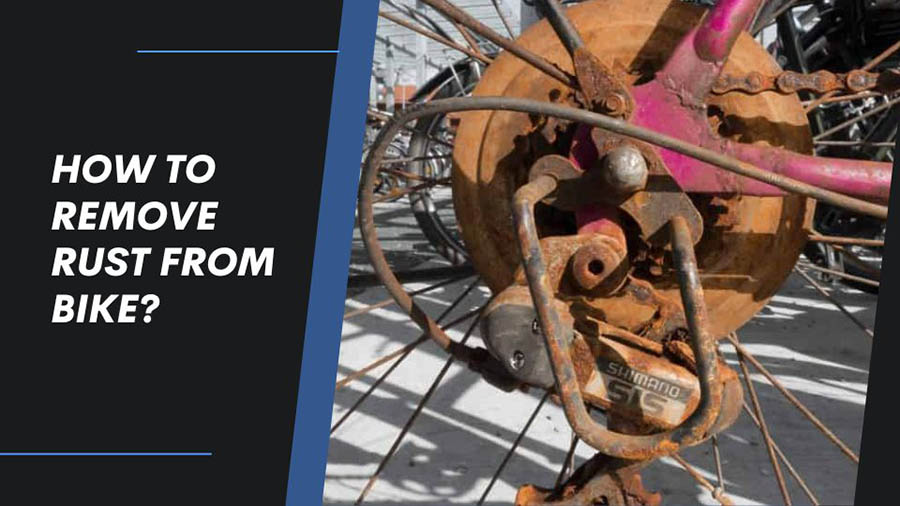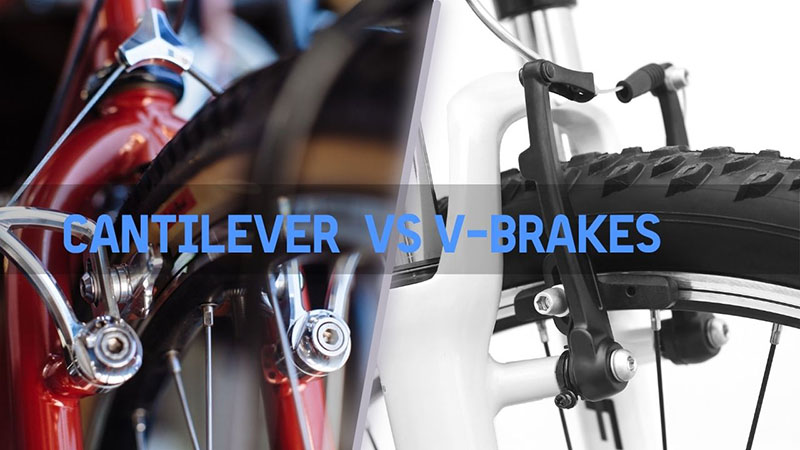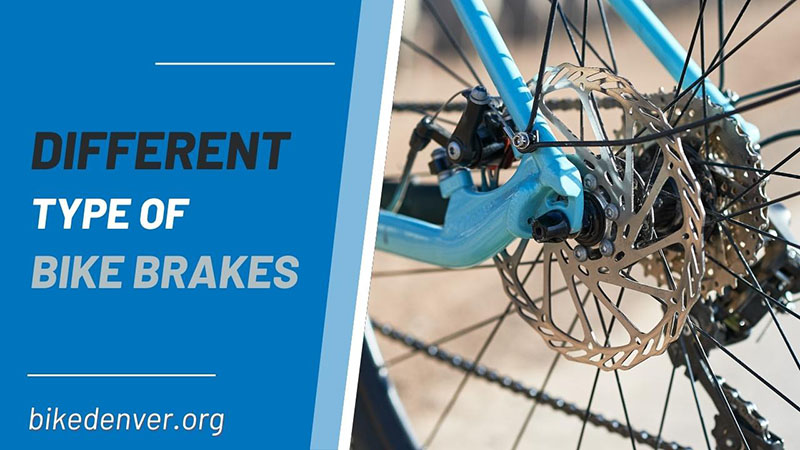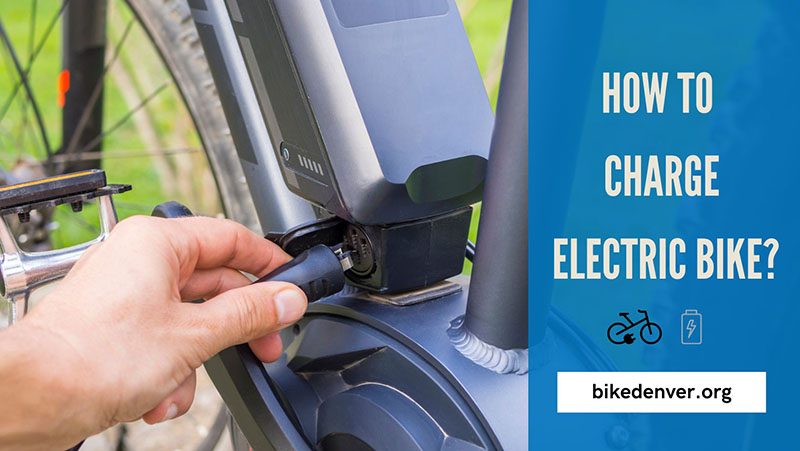Just like any vehicle out there, bikes cannot retain their immaculate shell forever. After all, they are subjected to a substantial amount of grain and dust on a daily basis, resulting in faint yet transparent layers of bike dust that refuse to relent under your scrubbing.
No need to worry, as our extensive guidelines will shed light on how to remove rust from bike with several bike maintenance solutions. Mark our words: starting from today, stubborn rust cannot bother you and your precious two-wheeler anymore!
Table of Contents
How to Remove Rust From Bike
The next section will deliver detailed instructions on rust removals for your chains, frames, handlebars, bike spokes, and rims.
Remove Bike Chain Rust
Rusty bike chain is a common source of headache for any typical bike owner. Before we start with our cleaning process, you should have all these tools at hand:
- Lubricant
- Deep bowl
- Lime juice
- Bristle brushes or toothbrushes
- Tools for link removal
- Scouring pad
- Dry cloth
With all the necessary items ready, let’s kickstart these simple steps!
Step 1. Inspect the bike chain’s entire length to spot surface rust or grime.
One immediate approach is to stand close to it and raise its rear end. Rotate the pedal in backward motions several times to observe rust, grime, and dirt stuck deep into the chains. Try to avoid splashing rust or dust particles to your eyes.
Step 2. Use a dry rag to wipe the dust. Once done, pick up your toothbrush (or bristle brush) and sweep “hidden” grime away. Stained areas between side plates and center rollers might call for different brush sizes.
With all mud and soil removed, the rusted surface will reveal more clearly under the light.
Step 3. Drip the scrub pads in juice (preferably lime juice or lemon juice) to scrub the chains’ surface rust. Against stubborn stains, flip your bike upside down before unlocking the chain with a removal tool. Soak your chain for two or three hours in lime juice.
Step 4. Take out the chains from the lime juice and dry them with a clean cloth. Make sure no water lingers before they are reattached to the bike.
Step 5. Add some chain lube while spinning the pedals; such moves help spread the liquid more evenly. Remember to exert most of your lube on areas between the side plates and center rollers.
Wipe off excess, if any. These lubricants establish a sturdy seal that protects your chains from harmful elements, keeping rust at bay.
Remove Rust On Bike Frames
These materials are a must to ensure optimal efficacy:
- Dry rag
- Steel or plastic scrub pad
- Bowl
- Sponge or brush
- White vinegar or baking soda solution
Now it is time to learn how to remove rust on bicycle frames!
Step 1. Mix baking soda and warm water in a basin (remember to keep them in a 50:50 ratio). Once done, stir that mixture till it grows thicker. Some extra tinges of juice are encouraged to strengthen the mixture’s properties.
Step 2. Use a sponge or brush to gather the paste. Spread it evenly along the frame’s entire span and let it settle for 10-15 minutes. Please do not remove these coatings before that benchmark, as the paste needs sufficient time to crack headstrong rusts.
For stubborn specks of dirt, WD40 or vinegar would be a more potent solution. They boast stronger rust removal capabilities than baking soda paste.
Step 3. Pick a steel or plastic pad to scour the paste off your frame. As you may observe, rusts will gradually break down to reveal the metal’s flaking. Apply more paste and increase the scrubbing’s intensity simultaneously, as combined strength makes sure no rust can persist.
Step 4. Leave the bicycle on its own for another 10 minutes. Then wipe off the soda with your dry rag. Keep repeating till you are certain the frame is 100% dry.
Step 5. Store your bicycle in a dry and cool place, preventing further maintenance issues.
Remove Bike Handlebars Rust
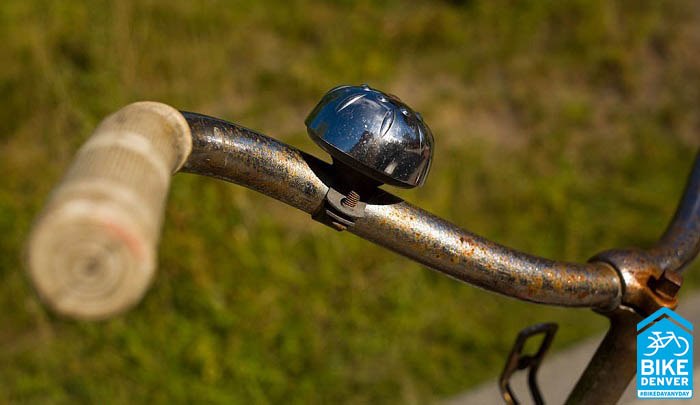
Here is a list of required ingredients to tackle handlebar filth:
- Lime juice
- Dry rag
- Toothbrush
- Tablespoon
- Cup
- Table salt
Measures on how to remove rust from a bicycle handlebar entail four primary stages:
Step 1. Stir six spoonfuls of table salt and two spoons of juice in a small cup till this mixture grows into a densely-textured paste.
Step 2. Press the paste all along your handlebars’ metallic compartments. Take extra care to achieve an even coating before letting them rest for 10 minutes. The paste should not be too flimsy (since its effects might fail to sink in) nor too stuffy (which might lead to drips).
Step 3. Use a toothbrush to gently dust off the handlebars in varied brushing motions. Do not stop till the stains crumble and fade away. Clean rugs are also a viable alternative if your toothbrushes refuse to cooperate.
Step 4. Now that all rusts are removed, flush your handlebars with water before drying them up with a cloth.
For future preservation, remember to polish your bikes with wax from time to time. We also believe a spray bottle that drafts clean varnish on your handlebars might be a great idea.
Remove Rusts from Bike Spokes
Ridding the spokes of grime calls for several ingredients:
- Brass or steel wool
- Dry cloth
- Wax
- Elbow grease
Step 1. Fan out some grease on your brass or steel wool pad. Next, rub these pads on each of the bike spokes. Run a scrap of wool up and down the spoke, rotating a bit around difficult spots.
Step 2. Keep repeating till some rust cracks are transparent; we recommend increasing your hand motions on more persistent filth. Remember to switch to the fresher portions on your pad whenever the wool falls off.
Step 3. Brush off all loose stains and lingering wool with a dry cloth. Wipe any excess remaining by rubbing waxes over them.
Remove Bike Rims Rusts
Make sure none of these materials are missing:
- Dry rag
- Degreaser
- Aluminum foil
Step 1. Detach the spokes, inner tubing, and tire from your bicycle wheels. Only the rims are left.
Step 2. Dip aluminum foil in a basin of degreaser for three or four seconds. Scrub this wet foil against your bike rims; take care to cover all corroded spots. Repeat again and again till the rusts fall off.
Step 3. Wipe a drag along the rims and apply wax to seal the deal. These waxes will keep grime from further development.
How to Keep Rusts At Bay In The Future
Keep in mind some of these tips to render your bicycle 100% rust-free.
- Opt for indoor storage
- Clean the bikes after rain
- Oil them often
Rather than wasting hours scrubbing stains off your two-wheeler, why don’t we take further steps to avoid such hassles in the first place?
1. Indoor Storage Is Advisable
Climate-controlled spaces (such as house entrances or HVAC-enabled garages) are safe against all rust, and perfect for storage. Otherwise, just one slight precip and rust development will transpire at a shockingly rapid speed!
2. Wipe The Bicycle After Rain
Suppose your bikes have to suffer quite often from rainstorms or slick wet roads. Give your valiant companion a thorough wipe-down until it shakes off all water!
Shiny parts – such as brakes, chains, and moveable compartments – are where you should pool most focus on.
The task might be quite a challenge with your bicycle bent over, so one solution is to purchase a good bicycle stand. Try to handle it at a counter height, and you will see tons of notable differences!
3. Oil Your Bicycle
Any cyclist must have some oil at hand since vehicle lubricating should be considered a daily upkeep in our opinion. Let the chains, pedals, and other weather-exposed elements absorb high-performance lubes before cleaning them with a cloth.
Worry that too much washing might peel off all your effort? Have no fear; even with substantial washing, sufficient grease will still cling to prevent corrosion.
Instead of all-purpose oils, lubricants designated for cycling – such as tri-flow products – may be all you need.
Conclusion
Our article has showcased practical methods for how to remove rust from bikes. Every bicycle element is well taken care of, ensuring no single issue is left out of the big picture. There should be no concern about required ingredients, either, since most of them are easily located in any nearby retail store.
For more questions, feel free to reach out to us.
See also: how to measure bike wheel size?

